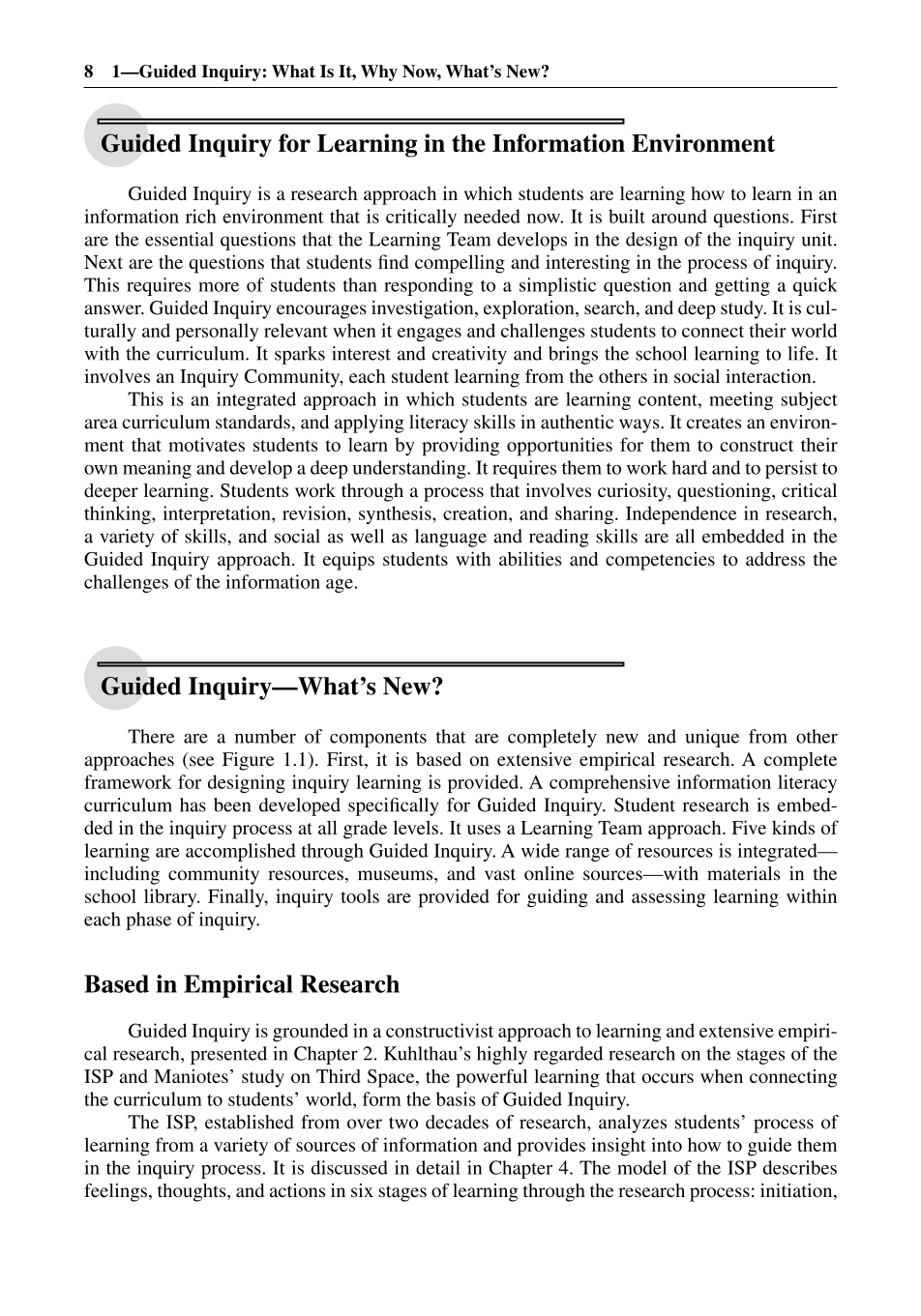8 1—Guided Inquiry: What Is It, Why Now, What’s New?
Guided Inquiry for Learning in the Information Environment
Guided Inquiry is a research approach in which students are learning how to learn in an
information rich environment that is critically needed now. It is built around questions. First
are the essential questions that the Learning Team develops in the design of the inquiry unit.
Next are the questions that students find compelling and interesting in the process of inquiry.
This requires more of students than responding to a simplistic question and getting a quick
answer. Guided Inquiry encourages investigation, exploration, search, and deep study. It is cul-
turally and personally relevant when it engages and challenges students to connect their world
with the curriculum. It sparks interest and creativity and brings the school learning to life. It
involves an Inquiry Community, each student learning from the others in social interaction.
This is an integrated approach in which students are learning content, meeting subject
area curriculum standards, and applying literacy skills in authentic ways. It creates an environ-
ment that motivates students to learn by providing opportunities for them to construct their
own meaning and develop a deep understanding. It requires them to work hard and to persist to
deeper learning. Students work through a process that involves curiosity, questioning, critical
thinking, interpretation, revision, synthesis, creation, and sharing. Independence in research,
a variety of skills, and social as well as language and reading skills are all embedded in the
Guided Inquiry approach. It equips students with abilities and competencies to address the
challenges of the information age.
Guided Inquiry—What’s New?
There are a number of components that are completely new and unique from other
approaches (see Figure 1.1). First, it is based on extensive empirical research. A complete
framework for designing inquiry learning is provided. A comprehensive information literacy
curriculum has been developed specifically for Guided Inquiry. Student research is embed-
ded in the inquiry process at all grade levels. It uses a Learning Team approach. Five kinds of
learning are accomplished through Guided Inquiry. A wide range of resources is integrated—
including community resources, museums, and vast online sources—with materials in the
school library. Finally, inquiry tools are provided for guiding and assessing learning within
each phase of inquiry.
Based in Empirical Research
Guided Inquiry is grounded in a constructivist approach to learning and extensive empiri-
cal research, presented in Chapter 2. Kuhlthau’s highly regarded research on the stages of the
ISP and Maniotes’ study on Third Space, the powerful learning that occurs when connecting
the curriculum to students’ world, form the basis of Guided Inquiry.
The ISP, established from over two decades of research, analyzes students’ process of
learning from a variety of sources of information and provides insight into how to guide them
in the inquiry process. It is discussed in detail in Chapter 4. The model of the ISP describes
feelings, thoughts, and actions in six stages of learning through the research process: initiation,















































































































































































































































































